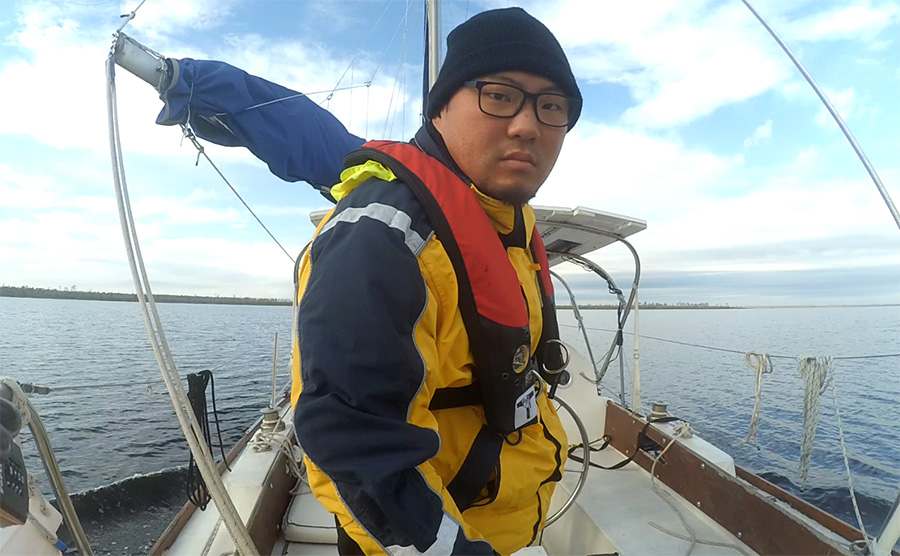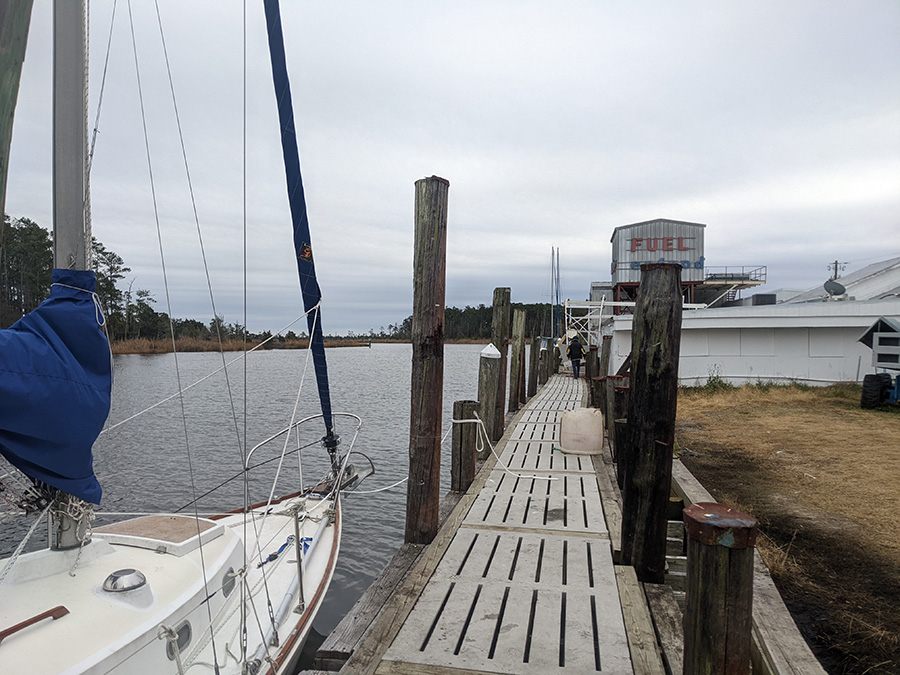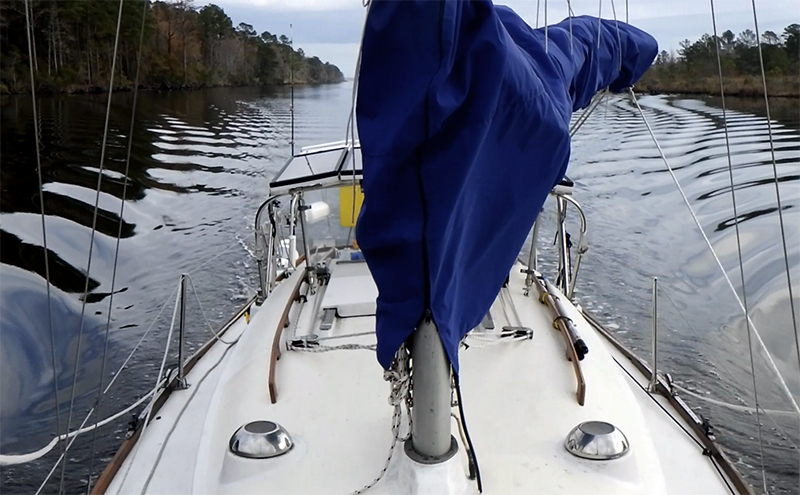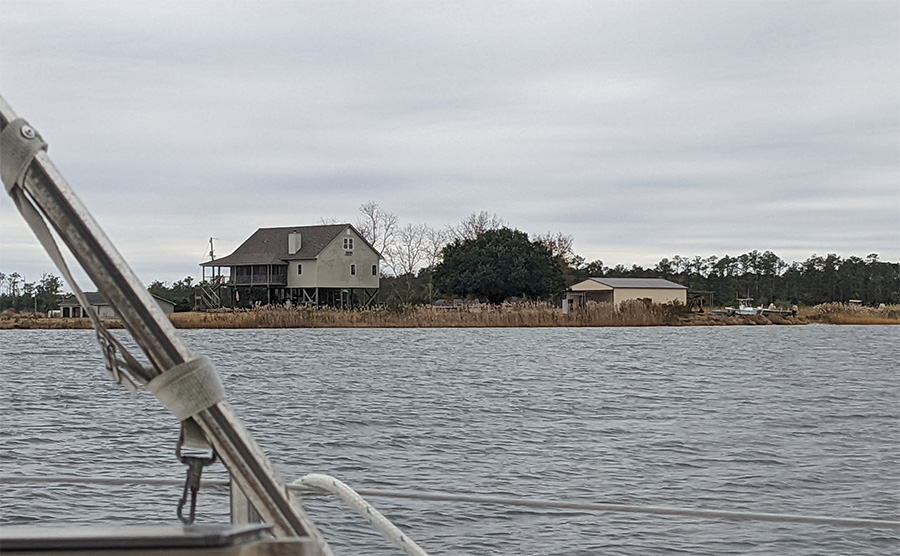
I think humans are meant to struggle for survival, even if its just a little bit. Even if you aren’t actually struggling to survive, being in an environment where that is on everyone’s mind is enough. It puts all of our ups and downs, triumphs and defeats in perspective. Of course, truly struggling to survive is horrible. I feel fortunate not to know what it feels like to truly starve, and I do not miss any part of even the mildest hypothermia. But I do think we’re hard-wired to be on the lookout and be in the pursuit of something. This way, when we get a breather, we get to truly enjoy the fruits of our labors in our pursuit to live.

That’s a really Buddhist way of thinking about it I suppose. Desire is the root of all suffering. There is no pleasure without pain. I start this entry talking about this because I had a pretty good day today. By all means, I should be miserable. I only traveled thirty nautical miles today, which is by the shortest leg I’ve had this entire trip. I sailed through a small craft advisory today and it wasn’t exactly smooth sailing. I fell short of my goal by quite a bit, and I’m not at Beaufort yet. But I am happy. I felt like a real sailor today. Not just some tourist on the Intracoastal.
My day started out rough. Strong winds were blowing when I woke up, not abating until eleven in the morning. The wind makes the transit difficult, but it also makes it hard to weight anchor alone. Even at eleven, it wasn’t an easy operation to get the boat unhooked. It took more trips between the foredeck and the cockpit, and the wind made everything feel colder. After a lot of straining and grunting, I was finally underway.
I did this trip last year with Captain Rob from Seabaltimore.com. One of the things I remember seeing on that trip was a seemingly random fishing boat station in the canal between Bay River and Goose Creek. It had this quaint look to it. On a somewhat run down wooden seawall, several offshore fishing boats docked. Visible was some of the equipment to unload the day’s catch. It had a real Forrest Gump feel to it. This commercial fishing dock, also open to recreational boats, was called ‘R.E. Mayo Docks.’

Well, that was today’s gas stop. Only a few miles after I weighed anchor, I docked there to top off fuel. I also got some sweets from the store. If I’m learning anything on this trip, it is that candy is very important for morale.
Unfortunately the bathroom here was pretty much an outhouse. You know its bad when I’d rather use valuable holding space on Sonora than use a bathroom on land. But the store also had a hardware section attached to it, and I was able to get one of those camping propane canisters. This was great since I’d been too lazy to get my big propane tank out from the lazerette.* And guess what? They carried shelf stable milk! I stocked up and replaced the cartons I already drank. I love milk.
Some of the other boats docked there were from harbors near my home port. They were all waiting for weather to pass. There was a small craft advisory out for the Pamlico sound area, as well as Beaufort. I had to negotiate a passage through the Neuse river as soon as I exited this protected canal. It went past the Bay River and is situated just West of the Pamlico sound, where the bad weather was. Some other cruisers were warning me about how the Pamlico sound was going to have six feet waves and that they were going to stay there overnight.

In sailing, there are so many different ways of doing things and different ways to enjoy cruising. For the same subject, you’ll get ten different pieces of advice and they will all be right, and all be wrong. You really have to pick and choose who to listen to. I double checked my forecast sources. I think the bodies of water I’ll be traversing will be okay. Certainly not waves over six feet.
Few minutes later, I had eighty percent of my genoa out with my motor turning at low speed. The waves slowly built up as I left the protected areas and headed into the Neuse river. These were definitely residual waves making its way over from the Pamlico sound. Quartering seas. The worst kind for electronic self steering. I managed to tune the autopilot so that it would hold its own course. It wasn’t quite six foot seas, but it was still a substantial three to four feet, stacked and sharp. Every once in a while, a six foot wave would come crashing by, knocking my boat’s stern whichever way it pleased.
In a display of poor seamanship, I did not stow my dinghy despite the forecast. It just slipped my mind. You don’t want your dinghy taking on water or losing its tow mounts in heavy following seas. I could turn around, put my anchor down, and fold up the dinghy. But the day would be over by the time I got done doing that. I decided to see what it would do, and continued on my way.

The dinghy would get pushed by the waves and take on a different direction from the mother ship. When that wave would reach Sonora, and she’d start surfing down that wave, then the dinghy would get yanked back to center. That couldn’t be good for the dinghy. I pulled the dinghy all the way up to the transom, so that only its stern would be dragged in the water. This seemed to exert a steady load on the tow mounts of the dinghy instead of jerking it around.
I had a few gybes to perform. I’m proud that I did them pretty smoothly. I took my time, moved the lines little by little. Doing it safe and gentle is more important than doing it quickly.
Before I knew it, I was entering Adams Creek – the last series of canals before Beaufort. Unfortunately, thanks to my delays this morning, it was already starting to get dark. I really wanted to push on a few more hours, but I remembered that the Beaufort area had strong currents. And undoubtedly, boats anchored at Beaufort would be dancing around their anchor with all this wind. I didn’t want to try to dodge other boats while anchoring single-handed, especially at night. Therefore, I shall anchor here in Adams Creek for tonight.
I got pretty good at getting the anchor ready while I was still in transit. This is what I do. About three quarters of a mile from the anchorage, I’ll slow down to idle speed, which is around two and a half knots for me. I’ll go forward, lay out the amount of rode** I need on the foredeck, being careful to keep the rode clear from getting fouled on my three deck cleats. I use my arm length to quickly measure how much line I am pulling out. Then I’ll undo the small line that I use to secure the anchor to my fake*** bowsprit. After that, I cleat off the anchor rode to the big power cleat, then I’ll head back to the cockpit. I’ll get the boat pointed towards the wind before engaging the autopilot. At unfamiliar waters, I’ll creep along towards my anchorage, just in case I run aground on an unmarked shoal or obstruction. As I approach the spot I want to anchor, I’ll put the engine in reverse and slow the boat down. Since I’m mostly doing this at night on this trip, I have a flashlight pointed into the water to see how much speed I have. Once I am stopped, I’ll keep it in reverse for a split second so I can get the boat moving stern first.
Then I put the engine back in neutral. I return to the bow and slowly lower the anchor to the sea bed. Once I feel the anchor touch the ground, I stop paying out any more rode. At this point, the boat might not back down in a straight line. She’ll be turning to one side or another. This doesn’t matter as long as I have room. I watch what the rode is doing. As long as my rode is forward of the boat and not pointing straight down, I’ll slowly play out more line. I do this so that the rode won’t stack on top of the anchor and foul up the anchor. After a good twenty feet or so, I usually let out all of the rode. Then I wait. I just bought myself time – the boat won’t move much anymore, and if it does, it’ll move slow. Eventually, the boat will pivot into the wind and the anchor rode will point upwind. Then I go back to the cockpit.
There, I will engage reverse at idle power to set the anchor. I don’t want to do this too fast because modern anchors like my Rocna will set hard and suddenly, which can damage your gear. Usually, with enough wind, the anchor would set before I even make it back to the cockpit. Then I’ll add power, up to 2/3 in reverse and confirm my anchor is not dragging. That’s it. I double check my position, turn off the engine, and go down below.

Today’s anchoring operation went just like this, except I realized I was awfully close to a boat I spotted much later than I’d have liked. She had her anchor light, her cabin light, and some random white light on in front of the mast. I did not even see the cabin lights until I was about one hundred meters away, and the masthead anchor light is sometimes difficult to identify as a vessel’s light. I’m glad I saw it when I did. I picked the anchor back up, let it hang at my roller, and motored away another hundred meters and repeated the procedure all over again. I decided to leave my steaming light on so the next person doesn’t make the same mistake.
Anyways, I’m happy today despite all of the difficulties. Perhaps, because of the difficulties. Today’s conditions forced me to focus, and I think that is what makes me happy during cruises. That little, tiny sliver of the struggle. . . the struggle to survive. The sore muscles in my back, core, and forearms are proof of this kind of day. Besides, unless something goes horribly wrong, by tomorrow evening, I should be in Beaufort!
*The lazerette locker is a locker in my cockpit that is the aft most storage area, just before my transom.
**Rode is a fancy boat-word for any chain or line attached to your anchor. Everything in between your anchor and your boat is rode. On Sonora, there is thirty foot of chain, followed by 250 feet of three strand nylon.
***I call my bowsprit a fake bowsprit because the forestay is simply attached to the hull, and the bowsprit only serves as an anchor platform. Bowsprits are supposed to let you carry the headsail further forward, past the hull.